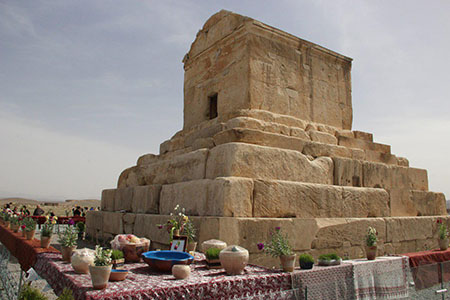
Cultural heritage of a country helps it have a better understanding of its political and social history. Cultural and documented heritage can be considered as the national memory (collective memory) of a nation. In fact, the identity and originality of modern-day cities stems from their heritages. Nowadays, the concept of cultural heritage is beyond the historic elements and monuments and is associated with all human past and present achievements.
These days, given the capacities and values in historic buildings, preserving these values for the next generation has become a challenge for Iran; however it is not limited to this single country and is a global concern. This year, on April 18, the theme for the International Day for Monuments and Sites (established by ICOMOS) is 'Heritage for Generations', which has raised concern for developing a more effective strategy to preserve these valuable heritages.
In the cultural heritage area, the Iranian authorities have agreed to revive these historic buildings, which is only possible with the collaboration and contribution of people who can be the custodians of each historic building. Generalization of the reviving culture and transference of local and native cultures are among the main goals of reviving these buildings, since cultures and sub-cultures, traditions and old customs (as intangible heritages) are the most important parameters in enriching the history of a country and conveying the culture of a country to other countries.
Popularizing the culture of revival and educating the present generation on the importance of preserving these unique heritages will preserve the historic memory of Iran for next generations. This model is now being practiced in many countries with ancient history, because government cannot single-handedly revive and maintain all the historic buildings. So, the Revival Fund for Cultural and Historic Sites is responsible for the implementation of this strategy (delegating the exploitation of these buildings to the private sector). Entrusting the endangered historic buildings to the private sector for revival and preservation is the only possible with public contribution.
In line with the preservation of valuable heritages for the next generations, UNESCO grants JikJi Memory of the World Prize to people and/or institutions that are trying to protect the historical heritages and to provide accessibility for them. This shows how important it for United Nations Educational, Scientific and Cultural Organization (UNESCO) to preserve historic buildings.
The International Museum Day, held on May 18th by the International Council of Museums (ICOM), concurrent with the Cultural Heritage Week, paid attention to the fact that museum, as an institution that serves to develop a society, can protect the tangible and intangible heritage of human being.
One effective way to extend the scope of these museums is to use the historic buildings revived by the private sector. One of the successful examples of this strategy is Mostofi House in Shushtar, Khuzestan Province. Here, not only the buildings, history and culture of this region have been revived, but also a museum has been established inside the house and is open to the public.
Finally, it can be concluded that the preservation of intangible cultural heritage and values of a society (which is among the missions and challenges of UNESCO during these years) is not possible without the help and will of people and the government cannot handle this grandeur project single-handedly. We hope the collective memory of Iran will be preserved for the next generations

Add new comment